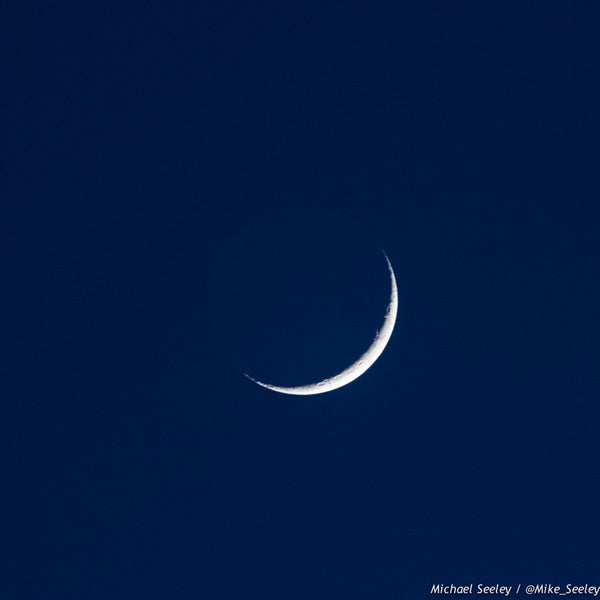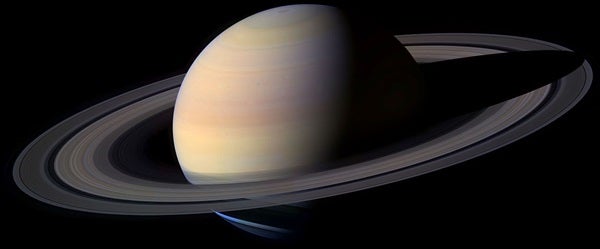Friday, October 7
The waxing crescent Moon continues to climb higher in the early evening sky. Tonight, you can find it nearly 10° to the upper right of Mars. The Red Planet remains a stunning sight all this week. It shines at magnitude 0.1 and appears about 20° high in the south-southwest as twilight fades to darkness. Target Mars through a telescope this evening and you’ll see an 8″-diameter disk with a few subtle dark markings. The eyepiece view also should reveal the 9th-magnitude globular star cluster NGC 6638. In a spectacularly close conjunction tonight, the planet skims just 4′ south of the cluster.
Saturday, October 8
The First Quarter Moon appears high in the south as darkness falls and remains on view until nearly midnight local daylight time. Our satellite officially reaches its First Quarter phase at 12:33 a.m. EDT tomorrow morning (9:33 p.m. PDT today), but it looks half-lit all evening. The Moon lies among the background stars of northern Sagittarius, above that constellation’s Teapot asterism.
Sunday, October 9
Mars’ eastward motion against the backdrop of Sagittarius carries it 1.6° south of the 5th-magnitude globular cluster M22. The best views should come through binoculars and rich-field telescopes.
Mercury’s finest morning apparition of 2016 is winding down. Although the planet reached greatest elongation from the Sun on September 28, it continues to brighten in early October and remains well-placed. The inner world shines at magnitude –1.1 this morning and lies 6° above the eastern horizon 30 minutes before sunrise. You should be able to see it with your naked eye, though binoculars can help you to find it initially in the twilight glow. Don’t confuse it with Jupiter, which is now returning to view before dawn. (The giant planet passed behind the Sun in late September.) This morning, magnitude –1.7 Jupiter appears 1.6° below Mercury.
Tuesday, October 11
The Moon’s absence from the morning sky these next few days provides observers with an excellent opportunity to view the zodiacal light. From the Northern Hemisphere, the time around the autumnal equinox (which occurred September 22) is the best for viewing the elusive glow before sunrise. It appears slightly fainter than the Milky Way, so you’ll need a clear moonless sky and an observing site located far from the city. Look for a cone-shaped glow that points nearly straight up from the eastern horizon shortly before morning twilight begins (around 5:30 a.m. local daylight time at mid-northern latitudes). The Moon remains out of the morning sky until October 15, when the waxing gibbous returns and overwhelms the much fainter zodiacal light.
Mercury and Jupiter appear side by side in this morning’s twilight sky. Jupiter, which shines slightly brighter, lies 0.8° to Mercury’s right.
Wednesday, October 12
Although the Orionid meteor shower doesn’t peak until next week (the morning of the 21st), you should see a few “shooting stars” associated with it before dawn these next few days. The Moon-free observing conditions in the morning sky now offer better viewing prospects than the waning gibbous Moon will at the shower’s peak. These meteors appear to radiate from the northern part of the constellation Orion the Hunter.
Thursday, October 13
The variable star Algol in Perseus reaches minimum brightness at 1:00 a.m. EDT tomorrow morning, when it shines at magnitude 3.4. If you start tracking it this evening, you can watch it more than triple in brightness (to magnitude 2.1) in the span of a few hours. This eclipsing binary star runs through a cycle from minimum to maximum and back every 2.87 days. Algol remains visible all night, passing nearly overhead around 3 a.m. local daylight time.
Saturn remains a gorgeous sight in the evening sky all week. It stands about 15° high in the southwest an hour after sunset and doesn’t set until 9 p.m. local daylight time. The ringed world shines at magnitude 0.5 among the background stars of southwestern Ophiuchus. When viewed through a telescope, Saturn shows a 16″-diameter disk surrounded by a dramatic ring system that spans 35″ and tilts 26° to our line of sight.
Saturday, October 15
Full Moon officially arrives at 12:23 a.m. EDT tomorrow morning (9:23 p.m. PDT this evening). You can find it rising in the east around sunset and peaking in the south around 1 a.m. local daylight time. It dips low in the west by the time morning twilight starts to paint the sky. The Moon lies in southern Pisces near that constellation’s border with Cetus. October’s Full Moon also goes by the name “Hunter’s Moon.” In early autumn, the Full Moon rises about half an hour later each night compared with a normal lag close to 50 minutes. The added early evening illumination supposedly helps hunters track down their prey.
Uranus reaches opposition and peak visibility today. Opposition officially arrives at 7 a.m. EDT, when the outer planet lies opposite the Sun in our sky. This means it rises at sunset, climbs highest in the south around 1 a.m. local daylight time, and sets at sunrise. The magnitude 5.7 planet lies in southern Pisces 2.6° northwest of magnitude 4.8 Mu (m) Piscium. Although Uranus normally shines brightly enough to glimpse with the naked eye under a dark sky, you won’t see it tonight because the Full Moon lies just 3° to its south. Use binoculars to locate the planet or, better yet, wait until the bright Moon isn’t so close. A telescope reveals Uranus’ blue-green disk, which spans 3.7″.
Sunday, October 16
Brilliant Venus stands out low in the southwest during evening twilight. The inner planet lies about 10° above the horizon a half-hour after sunset and sets as twilight comes to a close. At magnitude –3.9, Venus is the brightest object in the evening sky after the Moon.
The Moon reaches perigee, the closest point in its orbit around Earth, at 7:34 p.m. EDT. It then lies 222,364 miles (357,861 kilometers) away from us.












